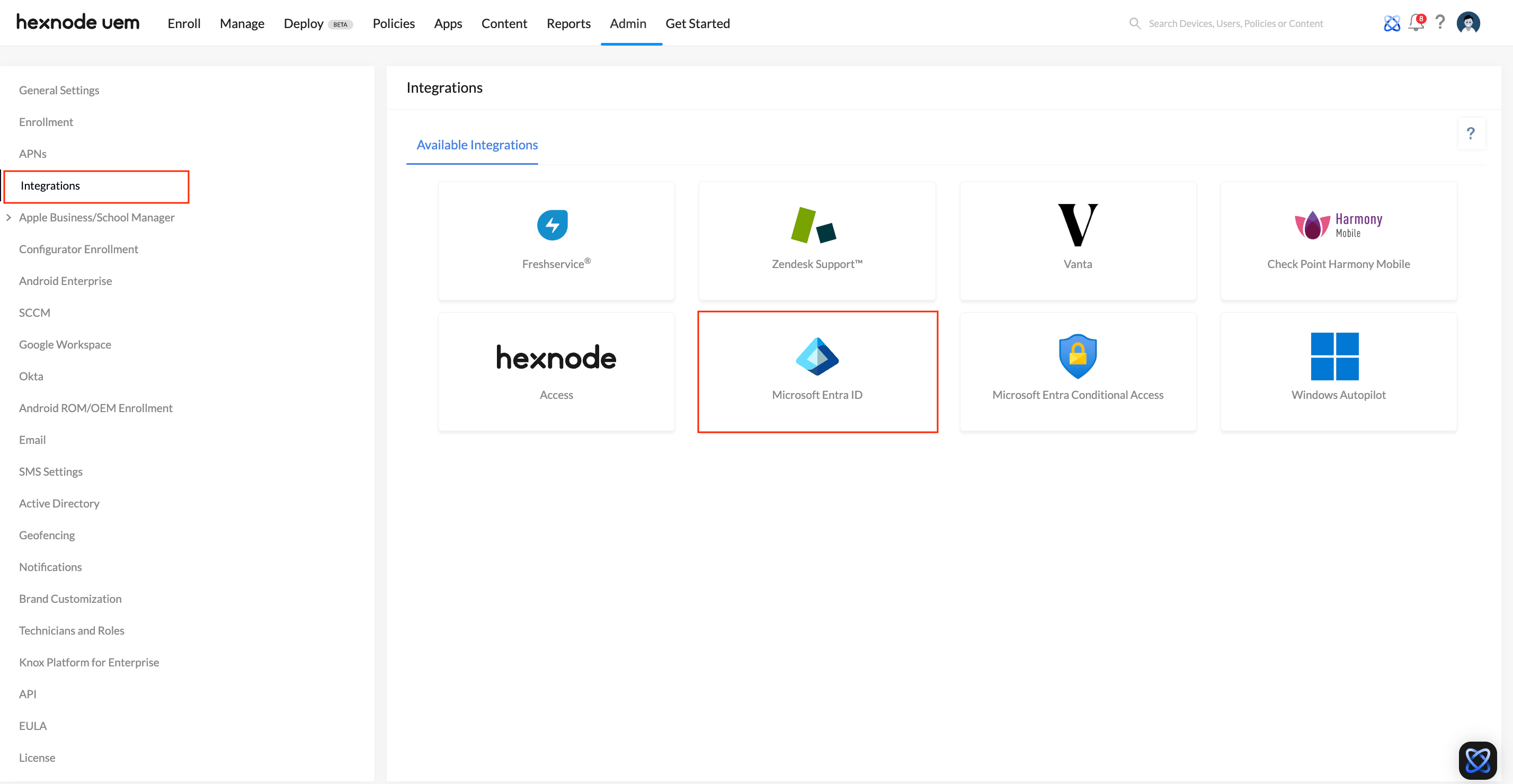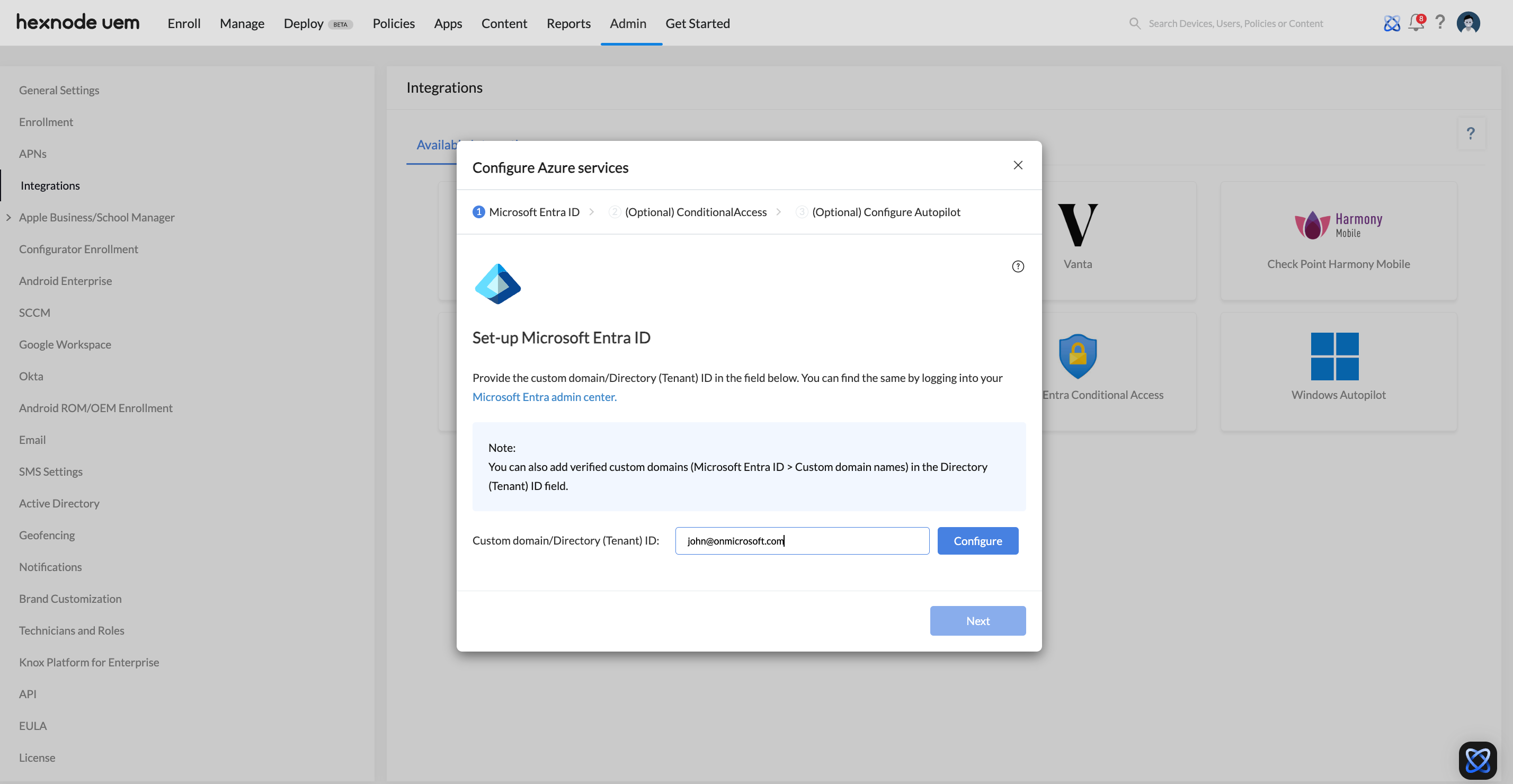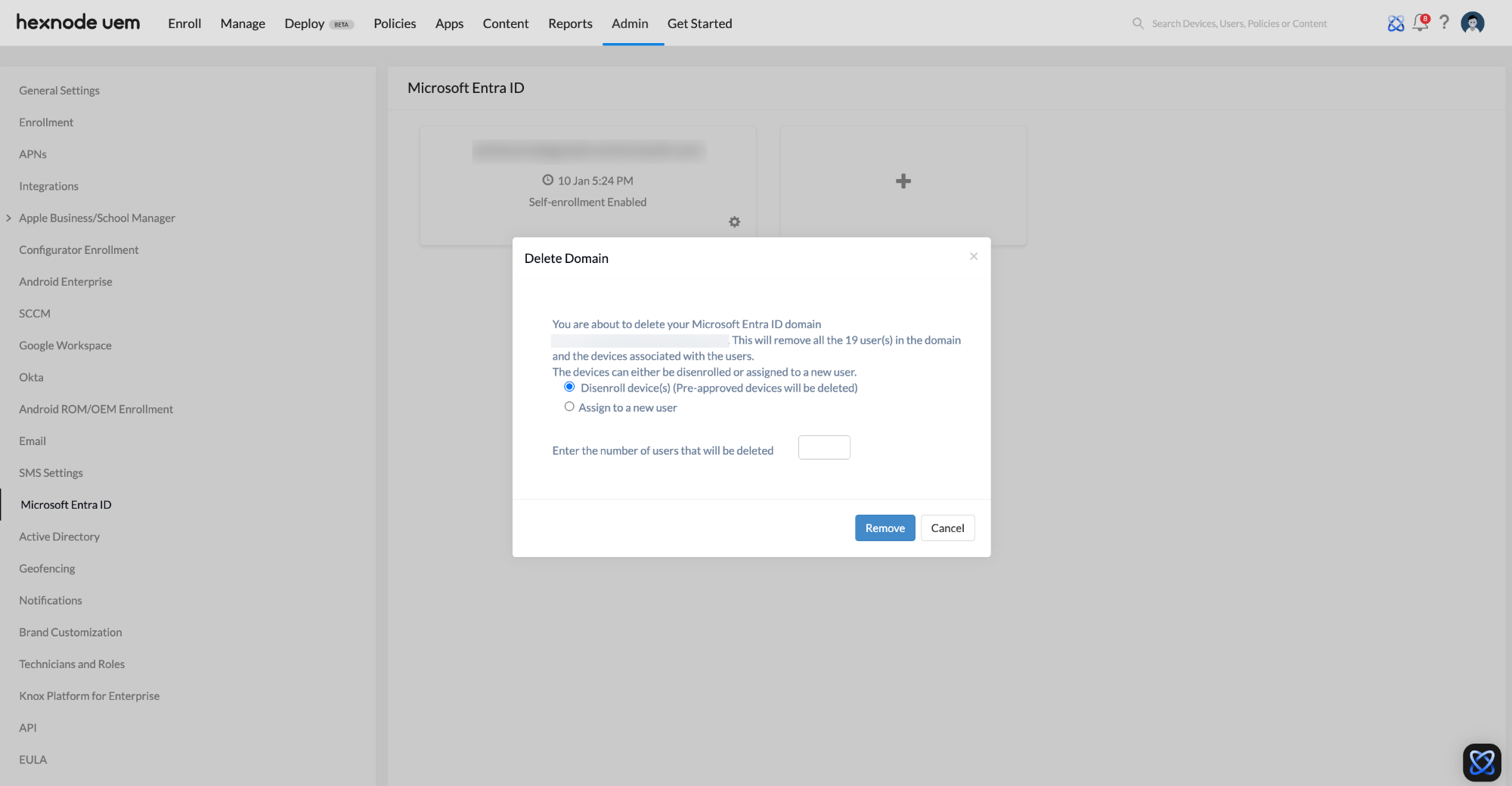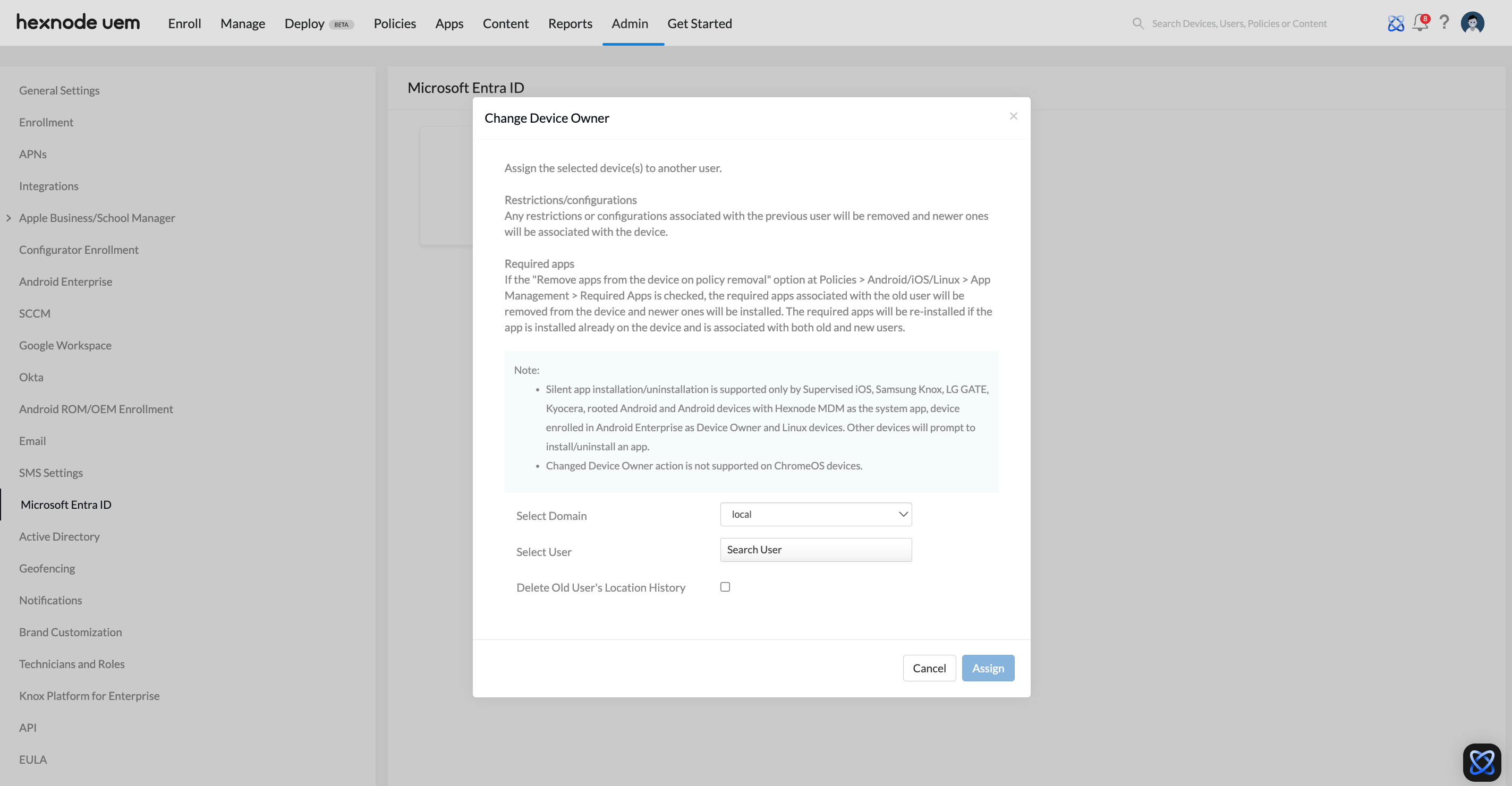Category filter
Microsoft Entra ID integration with Hexnode UEM
Microsoft Entra ID is a cloud-based, multi-tenant identity and access management service. It provides easy sign-in provisions and automates workflow to meet the needs of your growing organization. It is a source to a single user or group information and provides a platform with enhanced security, access management, scalability and reliability for connecting multiple users.
Microsoft Entra ID supports multi-factor authentication thus providing a source of security for organizational resources. It allows the users to sign in with their pre-existing credentials by bringing in single sign-on (SSO) based approach. Integrate your Microsoft Entra ID with Hexnode and manage the Active Directory from a single console, sync your users and groups for easy enrollment and policy assignment.
Integrate Microsoft Entra ID
To configure Microsoft Entra ID with Hexnode,
- On your Hexnode UEM console, navigate to Admin > Integrations.
- Select the Microsoft Entra ID tile from the available integrations.
- A window will appear prompting you to enter your organization’s Microsoft Entra custom domain/Directory (Tenant) ID.
- Enter the domain details and click Configure.
- You will be prompted to sign in with your Microsoft Entra ID credentials.
- After signing in, a pop-up will ask for permission to the Hexnode Azure Directory Services app. Check the box and click Accept.
- You will be redirected back to the Hexnode UEM portal, where the integration with Microsoft Entra ID will be completed.
In the same integration window, you can configure both the directory settings and the scheduled sync settings to simplify the enrollment setup.
- Allow self-enroll – Allows users to enroll their devices into Hexnode UEM using their Microsoft Entra ID credentials.
- Map UPN to email address – Adds the User Principal Name from the Microsoft Entra ID account as the email address on your Hexnode UEM portal, if an email address does not exist for the user.
Schedule sync
Hexnode UEM allows the users to decide how often they want to sync the AD with Hexnode.
- Admins can choose to initiate sync either daily or on a weekly basis.
- Select the days of the week or choose a specific time of a day for the sync to occur.
Once the integration is complete, a Microsoft Entra ID subsection will appear in the left pane of the Admin section. This subsection will display all the integrated Entra ID domains as tiles, allowing you to modify the scheduled sync and directory services settings. From here, you can directly sync or delete domains and disable self-enrollment for the integrated Entra ID domains.
Delete AD domain
Hexnode UEM lets users remove their Microsoft Entra ID domain from the portal with ease.
- Access the Delete Domain option by clicking on the settings icon under Enroll > All Enrollments > Enterprise > Microsoft Entra ID.
- During the deletion process, the administrator is provided with two options.
- Disenroll device(s)
- Assign to a new user
- Disenroll device(s) option removes the Microsoft Entra ID domain from the portal and disenrolls all devices enrolled under the domain.
- Pre-approved devices will also be deleted from the portal.
- The admin is then required to specify the number of users that will be deleted under the domain and click on the Remove button to complete the process.
- Assign to a new user option lets the admin assign all devices under the domain to a new user. All existing restrictions/configurations and apps associated with the old user will be removed from the respective device(s).
- After specifying the number of users that will be deleted, click on the Remove button which will open a dialogue box to assign device(s) to a new user.
- Select the domain and choose the user to assign the devices.
- Toggle the Delete Old User’s Location History checkbox to delete location history of old users. Click on the Assign button to complete the process.














